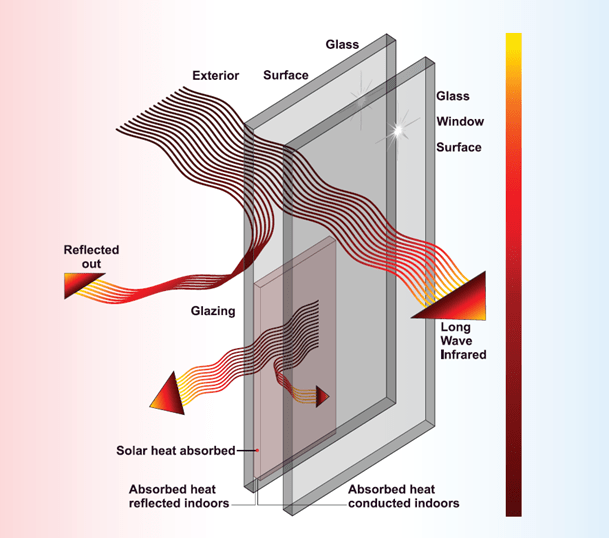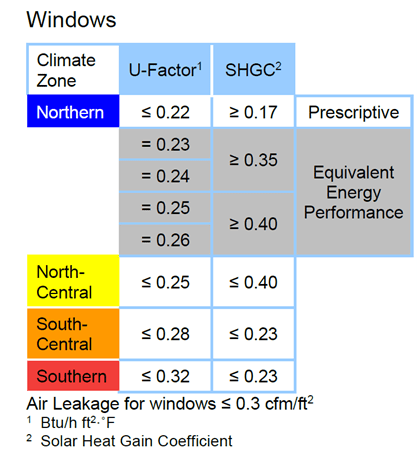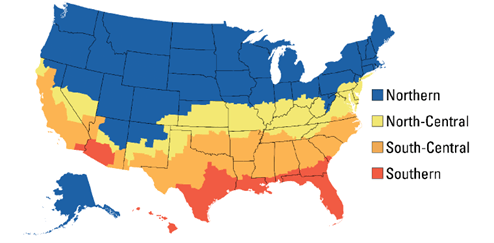Home » News and Resources » Replacing Your Home’s Windows
Replacing your home's windows
Replacing your home’s windows with EcoWindows Passive House windows will improve indoor comfort and filter out damaging ultraviolet light while potentially saving you hundreds of dollars a year on heating and cooling costs.

EcoWindows Passive House windows meet strict performance standards. Our windows feature:
• Double, triple, or even quadruple panes of glass with inert gases such as argon between them that vastly improve the ability to insulate against unwanted heat flow into or out of the house, depending on the time of year.
• Window frame materials designed to improve the window’s insulating abilities.
• Spacers that keep a window’s glass panes the correct distance apart to reduce heat flow and help prevent condensation.
• Special coatings to create low emissivity (“low-E”) glass. Such low-E glass reflects heat energy either into or out of the house, further enhancing insulation. It also reflects ultraviolet (UV) light away from the house and can protect your household furnishings from UV-induced fading by as much as 75%.
• Our premium models have insulated frames to further improve the energy efficiency of our window.
Replacing Old Windows
Many homes across the United States still have traditional single pane or older double-pane clear glass windows. These window materials are inefficient at preventing heat loss in winter and heat gain in summer, leading to higher energy bills. If your house has these outdated windows, you could be spending hundreds of dollars more annually on heating and cooling compared to upgrading to the latest EcoWindows Passive House windows.
While replacing old windows is a substantial upfront investment, the benefits make it a wise decision in the long run. New high-performance windows provide improved comfort year-round, reduce energy consumption, and result in significant cost savings over time. By installing EcoWindows Passive House models, you can potentially cut your yearly household energy expenses by 7% to 25% or more, with the exact savings depending on your climate zone and the specific windows being replaced.
To get the maximum benefit from new windows, it is important to first ensure that your home is well-insulated and air sealed. Proper insulation and air sealing will enhance the energy efficiency of replacement windows and make your whole house more comfortable. After these fundamentals are addressed, upgrading to EcoWindows Passive House products is the next step in creating an energy-smart home that will serve you well for decades.
Window Installation Essentials
Proper installation is critical to realizing the full benefits of even the most energy-efficient windows. Poorly installed windows can lead to drafts, air leaks, and moisture condensation, compromising the comfort and energy performance of your home.
To ensure a successful window replacement project, it is essential to work with skilled, experienced installers who follow industry best practices and manufacturer guidelines. Key installation steps include:
• Carefully removing the old windows without damaging the surrounding wall.
• Inspecting and preparing the rough opening, including cleaning, leveling, and applying flashing as needed.
• Setting and squaring the new window in the opening, using shims to achieve a plumb, level, and square fit.
• Insulating the gap between the window frame and rough opening with low-expansion foam or backer rod and caulk.
• Sealing around the interior and exterior of the window unit with the appropriate caulking and trim.
• Verifying proper operation and locking of all window sashes and hardware.
Our team of factory-trained window installers has the expertise to handle every aspect of the replacement process. We will work efficiently to minimize disruption to your daily routine, while ensuring that every window is installed to the highest standards. With our professional installation services, you can have peace of mind knowing that your new high-performance windows will deliver the expected energy savings and comfort for years to come.
Factors to Consider: Selecting Efficiency by Climate Zone
When purchasing EcoWindows Passive House windows, look for the U-Factor and the Solar Heat Gain Coefficient (SGHC). The U-Factor measures how well the window insulates. While the U-Factor can take any value, in general for windows it ranges from 0.20 to 1.20. The lower the U-Factor, the better the window insulates. The SHGC measures how much of the sun’s heat comes through the window. It can range in value from 0 to 1. The lower the SHGC, the less solar heat the window lets in. 2022 Version 7.0 ENERGY STAR product specification for Windows


Bernard Harrison
Drafting Team Leader – Eco Windows USA
6+ years of industry experience. Specializes in energy-efficient passive house windows and doors.
Pound Ridge, NY | 📞 (203) 636-0011 | ✉️ Send an email
